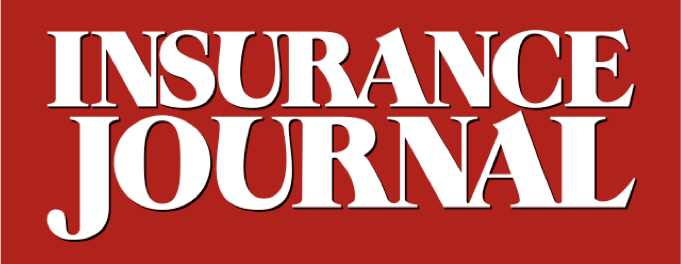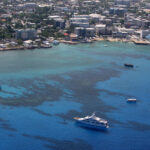Hawaii Gov. Josh Green announced the confirmed death toll had risen from the destructive wildfires in the island-state to more than 100 in an late Tuesday, saying, “We are heartsick that we’ve had such loss.”
The Associated Press is reporting the U.S. Department of Health and Human Services deployed a team of coroners, pathologists and technicians along with exam tables, X-ray units and other equipment to identify victims and process remains. CNN reported the death-toll stood at 106 by Wednesday afternoon.
The scale of property loss also continues to change.
Catastrophe modeler Karen Clark & Company on Tuesday issued new estimates showing the insured property losses from the Lahaina Fire in Hawaii to be around $3.2 billion.
“The Lahaina fire burned approximately 2,170 acres and devastated the town of Lahaina in Maui, HI,” a KCC analysis states. “Through an independent geospatial analysis of satellite and aerial imagery, KCC estimates that more than 2,200 structures fall within the fire perimeter, and over 3,000 total structures were impacted by the fire, including secondary impacts such as branding and smoke.”
AccuWeather on Monday increased its estimate of the total damage and economic loss from the devastating wildfires burning in Hawaii to $14 to $16 billion. That update followed AccuWeather’s preliminary estimate last week of total damage and economic loss of $8-10 billion.
Responses to the disaster have varied. Some groups say the disaster highlights the impacts of climate change and the need for greater wildfire resiliency measures. The SmarterSafer Coalition, which includes environmental groups, taxpayer advocates, insurance interests, housing organizations, and mitigation advocates, called for more investing in pre-disaster mitigation.
The group issued a statement calling the Maui blaze “a catastrophic reminder that the need to invest in pre-disaster mitigation is becoming increasingly urgent. The insufficiently activated emergency warning systems and changing climate which exacerbated this disaster show why it is essential to proactively engage in efforts to protect communities.”
The group is urging a redesign our infrastructure to account for wildfire risks by incorporating fire-resistant materials, defensible space requirements, and other resilience-enhancing measures, as well as for policymakers to address the underlying causes of the wildfires “by investing in pre-disaster climate adaptation mitigation efforts to protect our environment as well as taxpayer dollars.”
Federal assistance has been pouring in, while nonprofits have begun bringing more help to fire victims as well.
The nonprofit Money Management International, formerly Consumer Credit Counseling Service, put out a notice on Wednesday of the availability of its free financial recovery counseling and personalized assistance for disaster survivors through Project Porchlight. Project Porchlight is a one-year program available to anyone in the U.S. impacted by a natural disaster. It is designed to accelerate recovery by helping survivors understand their rights, responsibilities and options.
The rising death toll from the wildfires makes them the deadliest in the U.S. since 1918, when 453 people were killed in Minnesota and Wisconsin by the Cloquet & Moose Lake Fires, according to the National Fire Protection Association.
A group of scientists on Wednesday blamed untamed grassland for helping fuel the spread and intensity of last week’s deadly fires on the island of Maui. Sporadic warnings from officials are being blamed for the scale of losses of lives, while others have criticized Hawaii’s emergency siren warning system for sitting silent during the deadly fires.
Related:
Was this article valuable?
Here are more articles you may enjoy.


 Death at Universal’s Orlando Resort Roller Coaster Ruled Accidental
Death at Universal’s Orlando Resort Roller Coaster Ruled Accidental  Suit Against OpenAI and Microsoft Blames ChatGPT for Murder-Suicide
Suit Against OpenAI and Microsoft Blames ChatGPT for Murder-Suicide  Apollo Sees Echoes of Collapse of SVB in US Insurance’s Shift to Caymans
Apollo Sees Echoes of Collapse of SVB in US Insurance’s Shift to Caymans  Aon Adds to List of Brokers Suing Howden US for Alleged Poaching, Theft
Aon Adds to List of Brokers Suing Howden US for Alleged Poaching, Theft 

